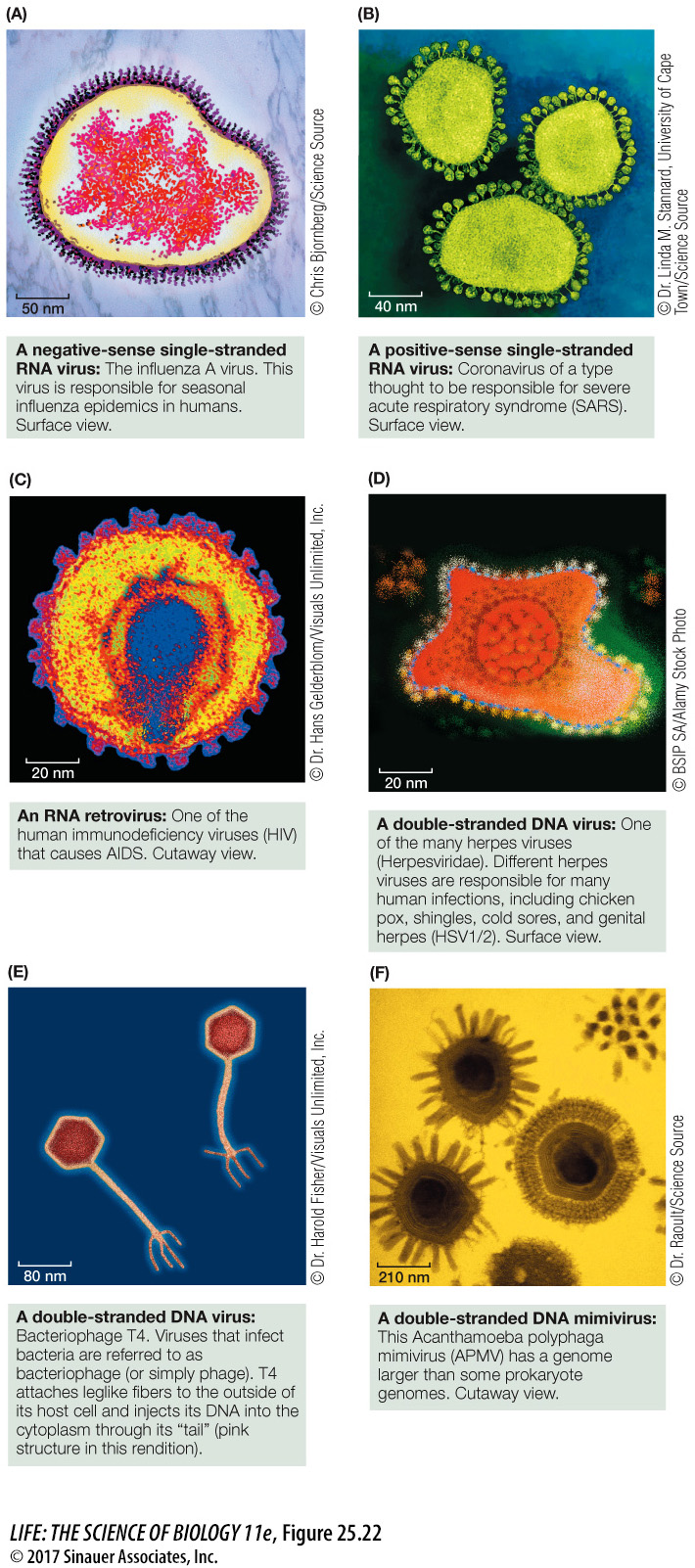key concept 25.4 Viruses Have Evolved Many Times
Some biologists do not think of viruses as living organisms, primarily because they are not cellular and must depend on cellular organisms for basic life functions such as replication and metabolism. But viruses are derived from the cells of living organisms. They use the same essential forms of genetic information storage and transmission as do cellular organisms. Viruses infect all cellular forms of life—
focus your learning
Several factors limit phylogenetic analysis of viruses.
Some DNA viruses may have evolved from reduced cellular organisms.
Viruses can be used to fight bacterial infections.
Viruses are abundant in many environments. In some freshwater and marine ecosystems, they can occur at densities of up to 10 million viruses per milliliter of water. Biologists estimate that there are approximately 1031 individual virus particles on Earth—
Although viruses are everywhere and play an important role in many ecosystems, many aspects of their ecology and evolution are still poorly known. For example, several factors make virus phylogeny difficult to resolve. The tiny size of many virus genomes restricts the phylogenetic analyses that can be conducted to relate viruses to cellular organisms. Their rapid mutation rate, which results in rapid evolution of virus genomes, tends to cloud evolutionary relationships over long periods. There are no known fossil viruses (viruses are too small and delicate to fossilize), so the paleontological record offers no clues to virus origins. Finally, viruses are highly diverse (Figure 25.22). Several lines of evidence support the hypothesis that viruses have evolved repeatedly within each of the major groups of life. The difficulty in resolving deep evolutionary relationships of viruses makes a phylogeny-
